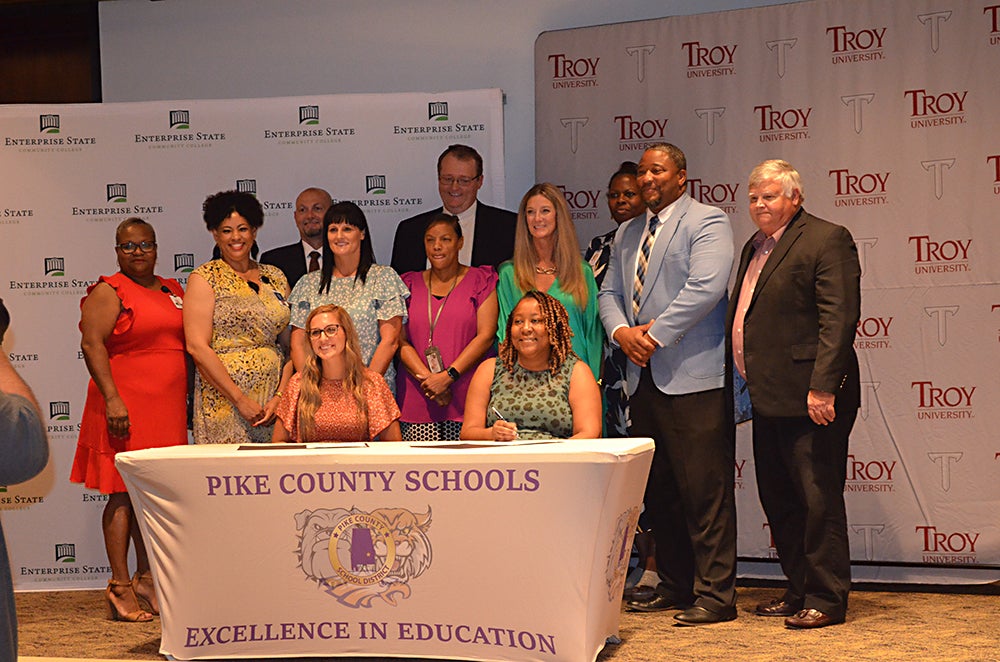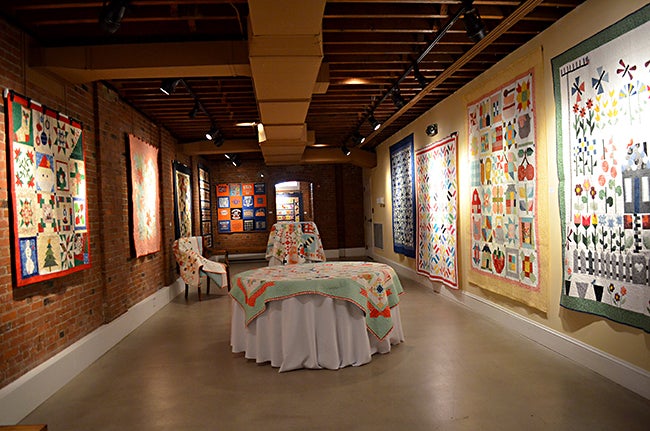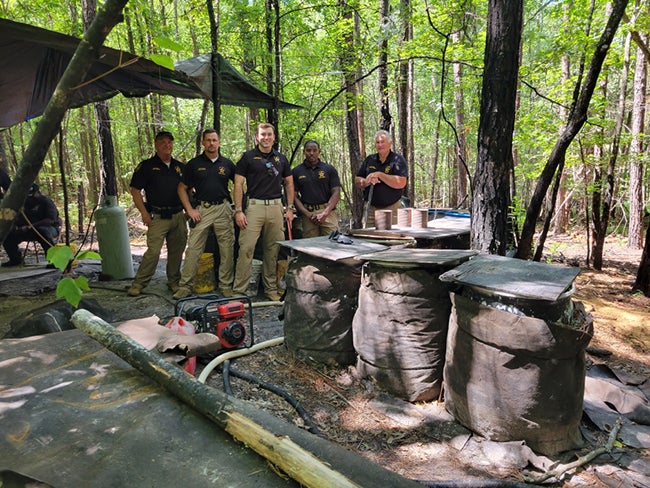‘Hands-On’ Learning
Published 3:00 am Saturday, August 6, 2016
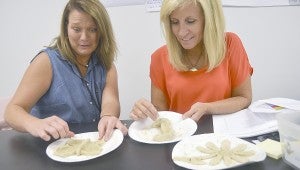
A thousand teachers have participated in AMSTI training at the center in Troy this summer. They learned in the same hands-on way that their students will learn this school year. Top left, Teacher/trainers with AMSTI, Jessica Moran, second grade Goshen Elementary, and Laura Ross, second grade Banks, learned about sand erosion through a sand sculpture project.
With Alabama’s new standards in place for the teaching of science, 1,000 K-8 science teachers in the Troy area, from the coast to north Pike, Butler and Crenshaw counties, have participated in hands-on training at the AMSTI (Alabama, Math, Science and Technology Initiative) center in Troy this summer.
The teachers represented 79 schools and 21 school systems. All 1,000 of them will benefit from the on-site training. They will also be provided with supply kits that will enable them to have the tools and resources for hands-on learning in the classroom.
“AMSTI is revolutionizing students’ science education and preparing them for the future,” said Denise Adams, AMSTI science specialist.
“The new approach is toward hands-on learning. Students learn easiest and retain information longer by doing. Engineering is deep into the new science standards. Students are given a problem to think about and to come up with creative ideas and a plan to solve the problem. Once the students have devised a problem-solving plan, they test that plan and make any improvements necessary to make that plan work.”
AMSTI trains teachers as learners. The teachers are trained using the same science kits that they will use in the classroom. The kits are aligned with the new science standards.
Each teacher who participated in the AMSTI training will be provided with a kit that contains all of the materials necessary for the hands-on activities required in the new standards for 18 weeks.
These kits are provided through the AMSTI program. Together the teacher training and the resource kits make it possible for students to learn by doing and have fun at the same time.
The hands-on learning has social benefits and team-building skills as well as students work together.
There are different hands-on projects and on different science subjects and each is designed for a specific outcome.
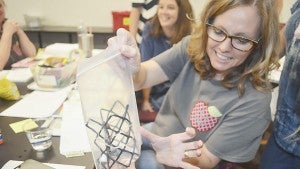
Ucella Jones, second grade GES, tried her hand at the art of transplanting plants for better growth.
Adams said the pebbles, sand and silt activity is designed to teach students about erosion along the beaches and to discover ways that this type of erosion can be prevented.
The teachers used their imaginations and their knowledge of the seashore and sea life to create sand sculptures and bring art into the activity.
The unit on plant growth provides students with opportunities to learn about plants and how they are transplanted so that they can grow and develop.
Other lessons to be taught include getting a handle on bees. The student/teachers made bee sticks and learned about bees, plants and pollination. In another activity, they made a water wheel, which would be a visual for energy and waste.
The teachers made a wind turbine and a woodlands habitat for both animals and plants.
“All living things need habitats,” Adams said. “The teachers constructed a habitat for the milkweed bug and their students will do the same. They will learn about habitats and have opportunities to actually construct a habitat. It’s a great learning experience.”
The teachers went outside the classroom to learn about energy and waves. They learned about solar cells and how electricity is generated. Even experienced science teachers found that the hands-on activity resources that are made available through AMTSI make learning more exciting, more fun and get that gray matter between their ears working.
“The kits that these teachers will have available to them in their classrooms will make a difference in the way they teach and in the way their students learn,” Adams said. “And, it will be a difference for the better.”


